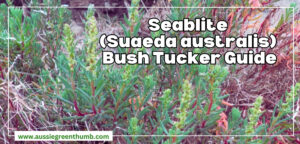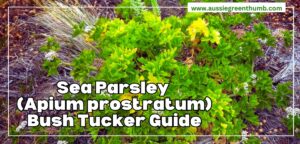Growing cherry blossom trees in Australia is relatively straightforward. The heavily scented pink, white and red flowers of these ornamental trees bloom best in bright sunny conditions, with steady cool winters, but once they establish they will be a reliable performer in any garden.
These ornamental cherry trees might not come with the bonus fruit of fruiting cherry trees but they have a far more reliable shape, need less pruning (if any) and, other than basic garden maintenance, pretty much thrive on neglect.
More...
What is a Cherry Blossom Tree?

Cherry blossom trees are amongst the most delicate, most beautiful flowering trees in the world. Their clouds of misty blossoms mark the start of the gardening year in most cultures and are a sure sign that winter is well and truly over.
The cherry blossom tree is also known as the Japanese cherry, or ornamental cherry, and is part of the Rose family of trees, which includes plums, fruiting cherries, and several varieties of non-fruiting cherry trees bred to flower at different times of the year.
Prunus cerasus is a winter flowering cherry, best grown in cooler climates, but the vast majority of cherries are spring flowering, and reliably jump into bud as soon as the days start to lengthen.
In Japan, they are a sign of new life, and national celebrations are still observed when cherry blossom trees begin to flower in spring.
What is a Cherry Blossom Trees’ Natural Habitat?
Cherry blossom trees do not produce edible cherries, and as such have no specific natural habitat. Cherry blossom trees were developed in cultivation to enhance the beauty of wild cherries and sour cherries – two main subgenus of Prunus which are the parents of all cherry trees in modern cultivation.
The wild cherry and sour cherry are both native to the Northern Hemisphere, so enjoy cool winters and regular rainfall.
Cherry trees aren’t picky about how much water they receive as long as it is reliable, and while edible cherry trees like cold winters (and should ideally be subjected to frost to fruit properly) ornamental cherries just need moderately cool winters to thrive, so are well adapted to all parts of Australia.
Best Types of Cherry Blossom Trees to Grow in Australia
Despite preferring the cooler, wetter, climate of the Northern hemisphere, cherry blossom trees grow well in Australia, and almost all varieties grow with vigour all over the country. What you might not realise is just how varied cherry trees can be, and quite how fascinating their history is.
Without going into too much detail I’ll briefly note that there is one name that crops up repeatedly in the modern history of cherry trees; Collingwood ‘Cherry’ Ingram, the man whose obsession with the beauty of cherry trees, and drive to preserve them ensured not just the survival, but the reintroduction of trees thought to be extinct.
The cherry trees in the list below are all either cherry trees I have known and loved, or cherry trees I have longed to see, but what’s most interesting is that while they represent the best of nature, almost all of them exist thanks to human intervention.
1. Great White Cherry Blossom Tree (Prunus ‘Tai-Haku’)
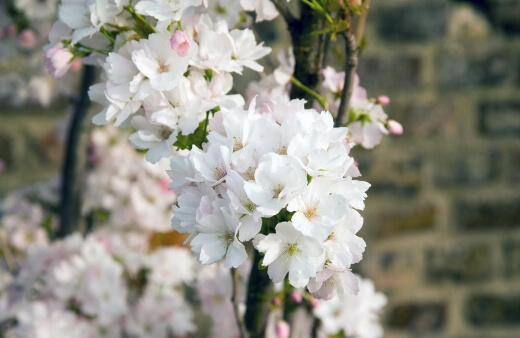
The Great White Cherry might be its common name, but there’s a magical ring to Prunus ‘Tai-Haku’ that I just can’t shake. The individual petals of ‘Tai-Haku’ are gigantic compared to other cherries, and its twisting, writhing branches reach to the sky and flatten out in an umbrella-like canopy.
‘Tai-Haku’ is the tree that cemented Cherry Ingram’s name in the history books, as a prolific cherry tree enthusiast, he got to know the trees and their habits like no one else on earth and observed their cultivation across the Western world in the early 1900s, but there was a tree which had eluded him, and that was thought to be extinct, the Great White Cherry.


Get Your Free Guide:
Master Growing Australian Natives eBook
A Must Have Complete Guide for Every Australian Garden
Get Your Free Guide:
Master Growing Australian Natives eBook
A Must Have Complete Guide for Every Australian Garden
Having given up on the possibility of ever finding the tree, and thinking it to be lost to history, Cherry Ingram found ‘Tai-Haku’ in an English garden.
He took a specimen to Japan for confirmation and had it confirmed that this was in fact the lost tree. It is now one of the most widely grown garden trees in the world.
2. Prunus ‘Shosar’

Prunus ‘Shosar’ is one of the most wonderful trees in cultivation, and one I’m thrilled to have my own garden (however young it might be). Prunus ‘Shosar’ is a fastigiate cherry tree, meaning it grows upright, with branches that grow towards the sky.
Mature Prunus ‘Shosar’ trees can reach 10m and grow as columns, making them ideal for small gardens where growing upwards is the best way to make the most of the space you have.
Their blossoms are rich pink, and only last a few weeks, but are well worth the annual wait.
3. Prunus ‘Horinji’
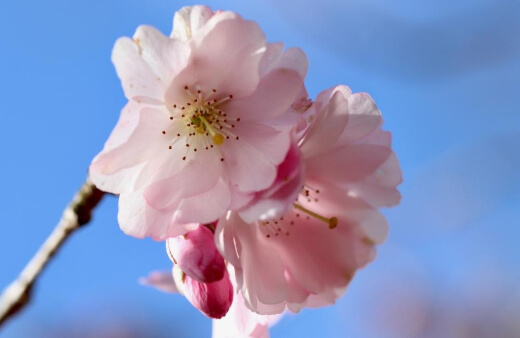
Prunus ‘Horinji’ is the perfect cherry tree for gardens with limited space. They are compact trees that can even be trained into multi-stemmed trees and treated as shrubs.
Sadly, Prunus ‘Horinji’ is incredibly hard to find in Australia, and are rare around the world, but there are a few commercial nurseries that supply ‘Horinji’ to the gardening trade, and most garden centres are capable of sourcing rare trees for more traditional compact gardens.
4. Prunus ‘Kiku-shidare-zakura’
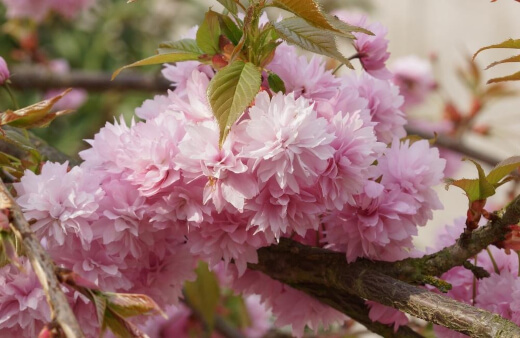
The classic weeping cherry tree and parent of almost all other weeping cherry cultivars, the Prunus ‘Kiku-shidare-zakura’ has an ethereal magic that is just unrivalled in horticulture.
Spring flowering weeping cherries are truly awe-inspiring plants, but its pompoms of pink flowers, clustered on flamboyant drooping branches make it one of the most inspiring plants in the gardening world.
This gorgeous tree is best for large gardens as it can grow up to 6m across and completely cover the earth beneath at maturity.
5. Prunus ‘Pink Perfection’
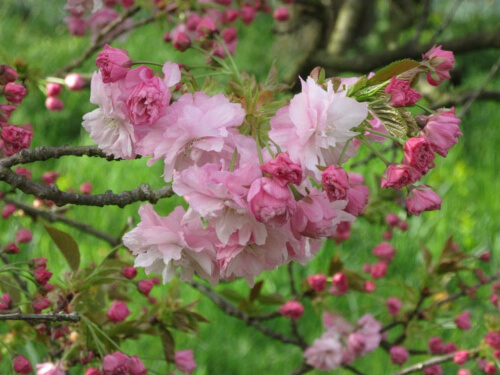
Source: Gardenia.net
Prunus ‘Pink Perfection’ was bred for the exact reason you would expect. It’s perfect, in almost every way. Its form is even, well balanced, and its blossoms are clustered in double-flowered blooms that stand with an even power against the blue skies of spring.
Their buds open out from red to pink, and fade slowly in late spring, creating a flurry of cherry blossom snow that floats across the garden.
Prunus ‘Pink Perfection’ is one of the most popular cherry trees in the world today, and what most people are talking about when they talk about the common Japanese Cherry.
6. Prunus ‘Pink Shell’
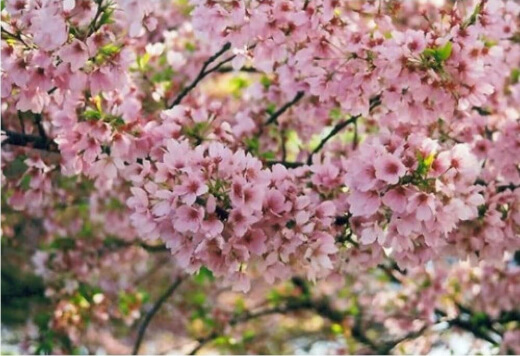
Prunus ‘Pink Shell’ is a wild, messy looking cherry tree, with gnarled bark and an erratic branching habit. When they are found growing in parkland and on large estates (in places where they are less preened) they look almost like mythical hawthorns, growing as multi-stemmed trees that burst out of the ground in every direction.
Prunus ‘Pink Shell’ is a slow-growing cherry tree but should be planted with caution in small spaces as it grows out rather than up and can take up 6-8m across when mature.
7. Prunus ‘Hokusai’

Source: botanicaplantnursery.co.uk
Prunus ‘Hokusai’ is one of the best cherries to grow as a bonsai. They have a slightly better germination rate than most cherry trees, and their looser pompoms of flower mean they flower more reliably on restricted rootstocks.
Because they grow quickly upwards as young trees, they are perfect for training soft young branches into controlled shapes and as they mature their branches flatten out and form a more even canopy.
8. Sargent’s Cherry (Prunus sargentii)

Affectionately known as Sargent’s Cherry, Prunus sargentii is grown for its rich burgundy bark, and its blood-red autumn leaves as much as for its blossom.
Most cherry trees are grown for their spring flower, but there are some cultivars that have interest all year round, and Prunus sargentii is definitely one of them, with bark that shines out in the garden through winter, and it an incredible visual companion to red and orange dogwoods, with fluorescent autumn leaves.
9. Prunus ‘Shirotae’

Many gardeners refer to Prunus ‘Shirotae’ as a weeping cherry, but it is in fact a wide-spreading tree, whose branches eventually bend under pressure.
Prunus ‘Shirotae’ are bred with mountainside cherries that grow outwards to make the most of the sun, rather than upwards to battle for height against other trees.
Their exceptionally widespread causes their branches to bend to the point that they touch the floor, so to grow these trees in a space that does them justice you need a very wide-open section of the garden, but there is no better place to shelter from the sun than under a natural Shirotae cherry.
10. Prunus ‘Gyoiko’
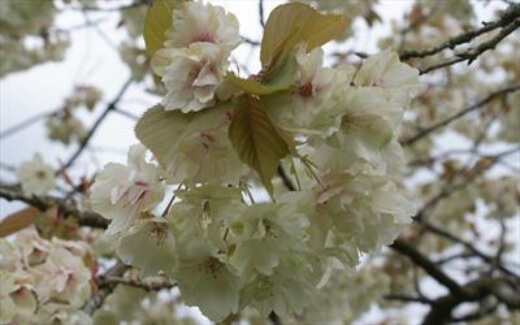
Source: pippintrees.co.uk
The unusual creamy green flowers of Prunus ‘Gyoiko’ are incredibly unusual for cherry trees. There are many growers who want the seasonal charm of cherries without the overstated, blousy, impact.
Prunus ‘Gyoiko’ is a wonderfully quiet, understated, cherry tree, and its bronze, pollen-rich, centres are great for spring pollinators too.
How to Grow Cherry Blossom Trees
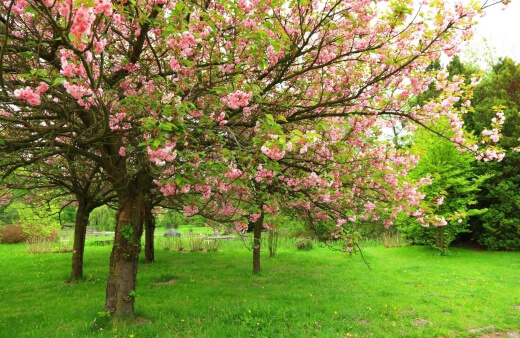
Cherry blossom trees prefer rich compost with reasonably good drainage. While they don’t like sitting in wet soil, they do still need moisture, so dry sandy soils should be improved with copious amounts of soil improver or manure before planting to help the ground retain water while the tree establishes.
When you’re planting a cherry blossom tree in any position, they need to be well watered for the first two years, particularly in summer. If the roots dry out they will fail to establish and won't properly anchor the tree in its position.
There are a few things you can do to help cherry trees establish strong root systems, but it depends on where you plant them.
Planting Cherry Blossom Tree
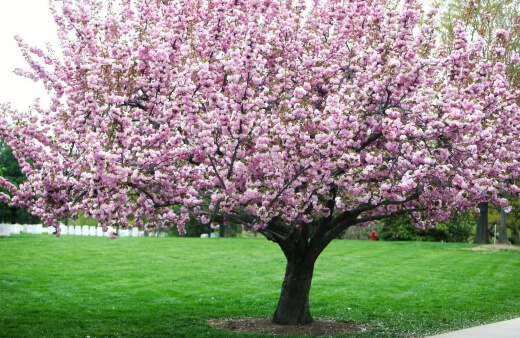
Cherry Blossom Trees have wide root systems rather than deep tap roots, so like to grow outwards. The roots of mature cherry trees protrude above the soil; a quality that makes them ideal for bonsai growers as their roots become almost as ornamental as the tree itself.
To help a cherry tree establish in the soil, dig a square hole, twice the width and depth of the pot your tree is supplied in (square holes encourage roots to grow outwards, rather than spiral around in the loose earth).
Tease the roots out by gently rubbing any compacted roots with your hands. Using gardening gloves (see our reviews on the best ones along with other gardening attires available online) is a good way to increase friction and even slightly break the roots, which stimulates new sideward growth.
Dig soil improver or compost into the soil for sandy soils, or if your ground is clay, line the base of the hole with grit or sand to improve drainage, and then thoroughly mix general purpose compost through the soil to open up the soil structure directly around the roots.
How to Care for a Young Cherry Tree
Dig the tree in, and water it every week with a full gallon of water in summer, and every two weeks in spring and autumn for the first two years (Don’t water in winter, cherry trees are deciduous and go completely dormant during these months).
Lastly, stake the tree after planting. It’s worth staking any tree in the garden, but particularly cherries as they’re slow to establish roots and can easily rock in the wind.
To stake trees, select a length of hardwood timber (softwood will rot too quickly) and place it on a diagonal between the stem and the ground, so it is behind the tree in the direction of prevailing winds.
How to Grow Cherry Blossom Tree in Containers
When growing cherry blossom trees in containers, they need watering more regularly, but as they are relatively fast-growing trees, container growing can help limit their size.
Avoid using just compost as you would use to plant bulbs or annual flower displays in containers, and instead plant cherry trees using topsoil and mulch with compost, or manure instead. By using topsoil you encourage the roots to go out in search of nutrients, which helps the plant to establish faster.
After planting your cherry tree in a container, water it weekly all season, only stopping in winter when the leaves begin to turn orange.
Cherry Blossom Tree Propagation
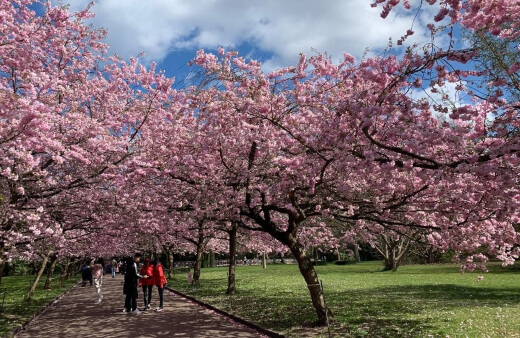
Propagating Cherry Blossom Trees from Seed
Cherry trees are quite complicated to grow from seed, usually needing a period of vernalisation. Vernalisation, also called cold stratification, is a process of chilling and thawing seeds to mimic their natural environment.
Many northern hemisphere trees and shrubs require vernalisation to germinate though, and cherry trees are incredibly good plants to attempt to grow from seed if you want to practise cold stratification.
Another good reason to propagate cherry blossom trees from seed is that they make excellent bonsai trees, so if you have a mature cherry tree that you would like a miniature version of, you can harvest the berries (careful, they’re poisonous), clean off the flesh, and place the seeds in a zip lock bag in the fridge for ten weeks.
After ten weeks, place them on the counter to thaw at room temperature, and then plant them in any seed potting mix covered with 5mm of soil.
Water these seeds regularly for two months, and you should see germination. Plant 10-20 seeds at once as cherry trees have a very unreliable germination rate, but one is sure to sprout if you plant enough!
Grafting Cherry Blossom Trees
For serious gardeners, grafting is the most reliable way to create new cherry trees. It requires a rootstock, which should be grown from seed first, provided the seed is from a reliable dwarf cherry tree, or Prunus, (cherry trees can grow to over 10m, so dwarf trees are usually used for rootstock to control their size).
Once you have a tree with enough stem to graft to, carefully dig the roots out of the ground, and pot it into new compost (it will need the help). Cut off all but the bottom 6” of the tree, leaving just a stump, and cut a groove in the tip of the stump.
Take a cutting from a one-year-old branch on a mature cherry tree of your choice, and cut a point in the end. Insert that cut end into the stump of the root-stock, and tie it tightly together with twine, ensuring the green growth inside the stems are touching firmly. Pour melted wax onto the joint to prevent infection, and then keep your new tree well-watered.
Note: Three-year-old trees are usually adequate for grafting root-stock, with 1inch thick stems, and the beginnings of woody bark starting to form).
Caring for Cherry Blossom Trees
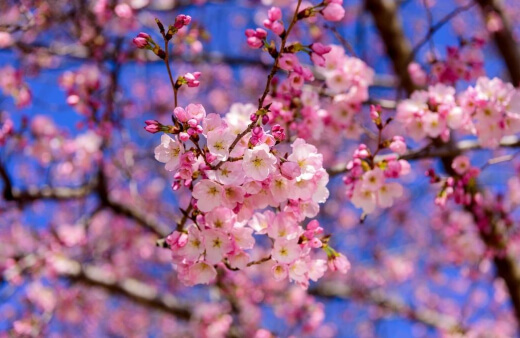
Caring for mature cherry blossom trees is simple. Once they have been established, they require very little attention and will reliably flower every year provided they don’t develop bacterial or fungal infections, but these are quite rare in Australia thanks to the lower humidity.
Mulching Cherry Blossom Trees
Cherry trees enjoy a generous mulch every two to three years to top up the nutrients in the soil, but they are completely hardy in nearly all climates and can survive prolonged freezing temperatures.
So mulch is only required for nutrients rather than protecting ornamental cherries.
What Fertiliser to Use
Cherry trees don’t need fertiliser to bloom. You can encourage healthier plants and improve their root health with high nitrogen feeds, but as long as you provide them with a biennial manure mulch they will have more than enough nitrogen in the soil to successfully produce outstanding blossoms.
Water Requirements
Mature cherry trees don’t require extra water unless they are planted in containers. Container planted cherry blossom trees should be watered at least once every two weeks, especially during droughts, and they should have their soil topped up with manure every year as containers lose nutrients at a much faster rate than earth.
Pruning Cherry Blossom Trees
Cherry blossom trees don’t require any standard pruning, so it’s not a job to add to any annual gardening calendars, but if you ever notice dead, damaged or diseased branches they should be cut out immediately.
Depending on the cause of the damage it can rub on other branches and spread infections.
Cherry Blossom Tree Pests and Diseases

Cherry Slugs
Cherry slugs are actually sawfly larvae rather than slugs, but they are incredibly voracious pests. Like all fly larvae though, they produce warning pheromones when under attack, so they are easy to control if you spot them early.
To prevent the recurrence of cherry tree slugs there are two effective organic methods of control. The most effective, and fastest acting, is also the grimmest: Squash a few of the larvae and mix them with hot water.
This makes a tea you can spray onto the leaves of the cherry tree in the evening which tells the sawfly not to lay any more eggs here. The less disgusting option is less efficient but works the same way by creating attack pheromones.
Encourage lacewings or hoverflies into the garden by planting pollen heavy plants. They eat sawfly and their larva, and the same pheromones are produced which discourage new eggs from being laid.
Bacterial Canker
All fruit trees, and their ornamental cousins suffer from canker, a bacterial disease spread through touch, wind, insects and dirty tools. There are all sorts of precautions we can take to prevent canker as gardeners, including general hygiene, cleaning tools, and washing our hands between touching any fruit trees – particularly Malus and Prunus.
Sadly though, bacterial canker can enter our trees after any damage, and insects flying between trees can spread quickly, so if you ever spot signs of black growths on the side of trees, make sure to diagnose the problem, then remove any cankerous materials and either burn them or dispose of them in big bags so they don’t affect other trees.
If a canker has caught the main trunk of a tree, it’s sad, but the entire tree needs to be cut back to below the infection.
Cherry Blossom Tree FAQs
How long does it take cherry blossom trees to bloom?
Cherry blossom trees can bloom in their first year, unlike fruiting cherry trees, which often take 6 years or more to begin producing fruit. The beauty of their fast growth is that you can have beautiful ornamental trees in the first season of planting them.
Do cherry blossom trees bear fruit?
Cherry blossom trees develop small berries, but they are so sour that they are not at all palatable to humans, and can cause severe stomach upsets. In warmer climates, cherry trees struggle to produce fruit at all.
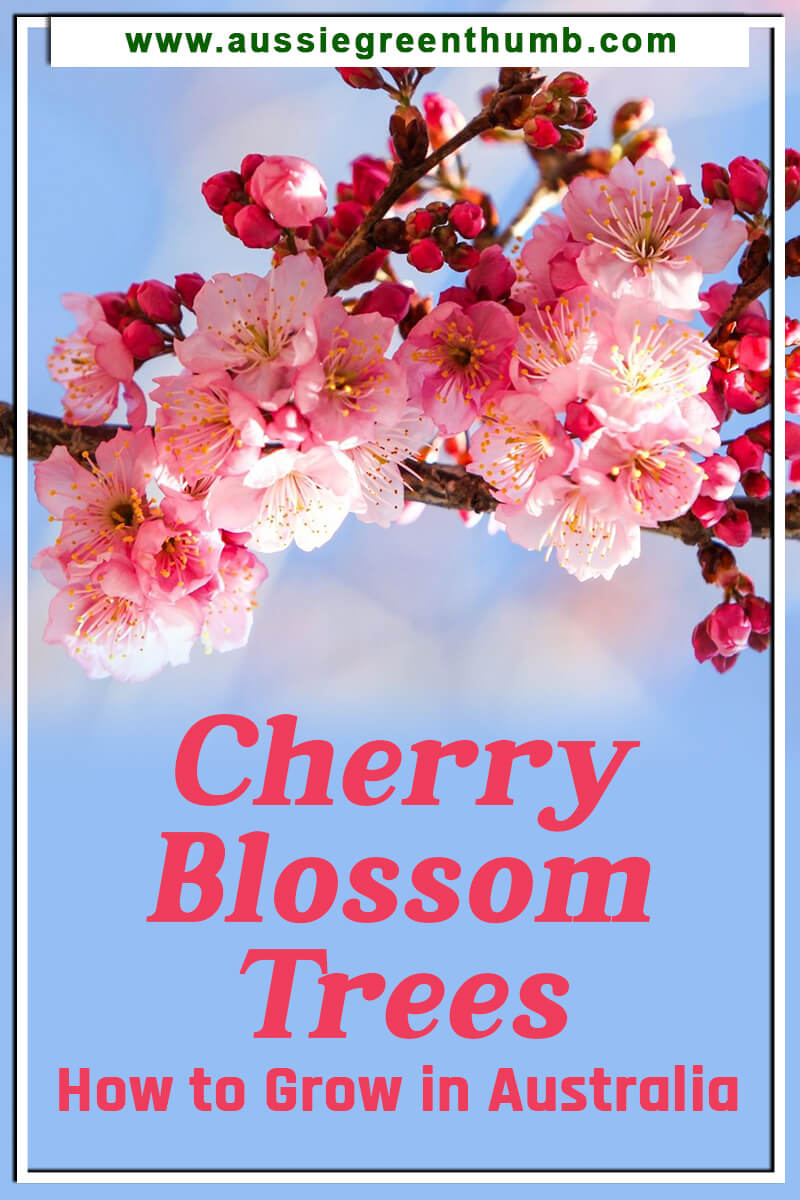
Create a Serene and Enchanting Garden with Cherry Blossom Trees
Ornamental cherry blossom trees are a great way to add character to a garden and a traditional way to mark the seasons. Whether you plant an ethereal weeping cherry or a twisted and characterful Yoshino cherry it will completely change your garden and the way you understand the seasons.
I’ve loved cherry trees since childhood, growing up in a garden that was completely filled with them so, to me, the year doesn’t truly begin until cherry trees blossom.
By following our guide to growing cherry blossom trees in Australia, you’ll hopefully develop your own relationships with these magical trees.
Published on February 26, 2022 by Maisie Blevins
Last Updated on February 12, 2024


